Warsaw Landmarks and Monuments
(Warsaw, Mazowieckie, Poland)
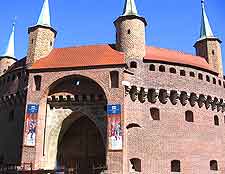
The Polish capital of Warsaw is filled with outstanding landmarks and monuments to yesteryear, many which have survived an interesting past of battles, wars and the uprising in 1944. Today, many of Warsaw's best landmarks remain very much as they appeared centuries ago, such as the Ratusz (City Hall) on the Plac Bankowy, and the Grand Theatre on the Plac Teatralny, both of which date back to the 1830s.
The tallest building in Warsaw and throughout Poland is the Palace of Culture and Science, which stands proudly on the Plac Defilad. Standing at just over 230 metres / 755 in height and boasting 42 floors, with more than 3,000 different rooms, this famous landmark was constructed in the 1950s and gifted to the nation by the famous Russian leader, Josef Stalin.
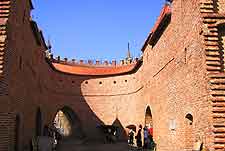
Barbican (Barbakan Warszawski)
Address: Ulica Nowomiejska, Warsaw, PL-00271, Poland, PL
The semi-circular Warsaw Barbican served as a fortified outpost for many years since being built in the mid-16th century. A classical Gothic structure separating both the Old Town district from the New Town, the Barbican is a major highlight in this part of the city and during the summer months, many visitors head here for the market, live music and plentiful supply of Polish beer.
Open hours: daily
Admission: free
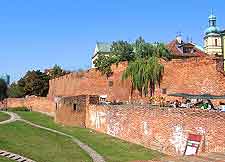
City Walls (Miejskie Mury Obronne)
Address: Plac Zamkowy, Warsaw, PL-00267, Poland, PL
The medieval city walls were built during the 14th century and extended further in the 15th century. Forming a double circle around the Stare Miasto district, Warsaw's City Walls remain in a remarkable state of repair and even feature a number of fortifications and gateways, such as the Krakowska and the Nowomiejska. A particularly prominent stretch is located to one side of the Castle Square (Plac Zamkowy) and leads towards the castle itself. Look on the ground of the square for further traces of this structure.
Open hours: daily - 24 hours
Admission: free
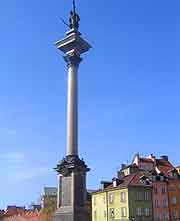
King Sigismund's Column (Zygmunt's Column)
Address: Plac Zamkowy, Warsaw, PL-00252, Poland, PL
One of the most significant and famous of all Warsaw's landmarks, Sigismund's Column was erected in the middle of the 17th century and presides over Castle Square, in the Stare Miasto district. Standing at the top of the column is a bronze statue commemorating King Zygmunt III Waza, some 20 metres / 66 feet above the ground.
The stairs surrounding the monument have become a popular place to sit and watch the nearby Polish street entertainers.
Open hours: daily - 24 hours
Admission: free
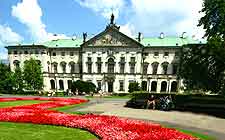
Krasinski Palace
Address: 5 Plac Krasinskich, Warsaw, PL-00207, Poland, PL
Located in the New Town area of Warsaw and built at the very end of the 17th century, Krasinski Palace is famed for its ornate Baroque architecture. Inside is equally impressive and although the palace was bombed during the Second World War, it was completely renovated soon after. Today, Krasinski Palace houses a large collection of art works owned by the National Library.
Open hours: hours vary
Admission: charge
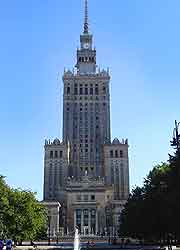
Palace of Culture and Science (Palac Kultury i Nauki / PKiN)
Address: Plac Defilad, Warsaw, PL-00110, Poland, PL
The Palace of Culture and Science used to go by the name of the Joseph Stalin Palace of Culture and Science and was completed in 1955, after a mere three years of major construction work.
Notable in Polish history, the Rolling Stones performed here in 1967 and were the first major rock band from abroad to ever play in Poland.
Open hours: daily
Admission: free
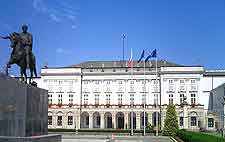
Presidential Palace (Palac Prezydencki)
Address: Krakowskie Przedmiescie 46-48, Warsaw, PL-00325, Poland, PL
Both an elegant and imposing landmark with origins in the mid-17th century, the Presidential Palace of Warsaw was owned by a number of aristocrats for almost 200 years, before becoming an Polish governmental building. Today, the palace serves as the official residence of the President of Poland. The front courtyard features several long, rectangular flowerbeds and a huge statue of Prince Józef Poniatowski riding a horse.
Open hours: daily, exterior only
Admission: free
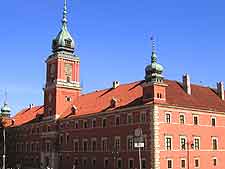
Royal Castle (Zamek Królewski)
Address: 4 Plac Zamkowy, Warsaw, PL-00277, Poland, PL
Tel: +48 022 657 2170
The Warsaw Royal Castle was used by the Polish government in the 16th century and symbolises the resilience of the Polish and after considerable damage in the Second World War, the entire castle was painstakingly rebuilt during the 1970s, with tremendous attention to detail. Today, the castle is part of the National Museum and houses many of its original exhibits, along with a total of 37 paintings in its Lanckoronski Collection, where two Rembrandt portraits are particular favourites.
Open hours: Tuesday to Saturday - 10:00-18:00, Sunday and Monday - 11:00-18:00
Admission: charge, discounts available
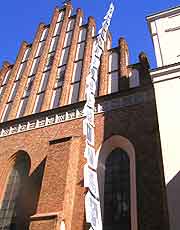
St. John's Cathedral (Katedra Sw Jana)
Address: Ulica Swietojanska 8, Warsaw, PL-00288, Poland, PL
Tel: +48 022 831 0289
The oldest of all Warsaw's churches, St. John's Cathedral was originally built during the 14th century. However, as the centuries have passed it has been necessary to rebuild this cathedral on several occasions, the most notable of which was during the 19th century and shortly after the Second World War, when historic illustrations were used to reconstruct its various elements.
Open hours: daily - 10:00 to 11:30 and 15:00 to 17:30
Admission: free, donations suggested
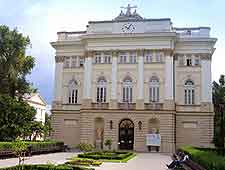
University of Warsaw
Address: Krakowskie Przedmiescie 26, Warsaw, PL-00927, Poland, PL
Tel: +48 022 552 0000
Home to a total of more than 60,000 students and staff, the University of Warsaw is one of the city's great landmarks and dates back to 1816, when it was established as just a small Polish university with only five departments. Today, the campus of the University of Warsaw has grown to quite a size and comprises 19 different departments and a number of historical palaces, such as the Kazimierzowski Palace (Palac Kazimierzowski).
Open hours: daily
Admission: free
 The Polish capital of Warsaw is filled with outstanding landmarks and monuments to yesteryear, many which have survived an interesting past of battles, wars and the uprising in 1944. Today, many of Warsaw's best landmarks remain very much as they appeared centuries ago, such as the Ratusz (City Hall) on the Plac Bankowy, and the Grand Theatre on the Plac Teatralny, both of which date back to the 1830s.
The Polish capital of Warsaw is filled with outstanding landmarks and monuments to yesteryear, many which have survived an interesting past of battles, wars and the uprising in 1944. Today, many of Warsaw's best landmarks remain very much as they appeared centuries ago, such as the Ratusz (City Hall) on the Plac Bankowy, and the Grand Theatre on the Plac Teatralny, both of which date back to the 1830s.







